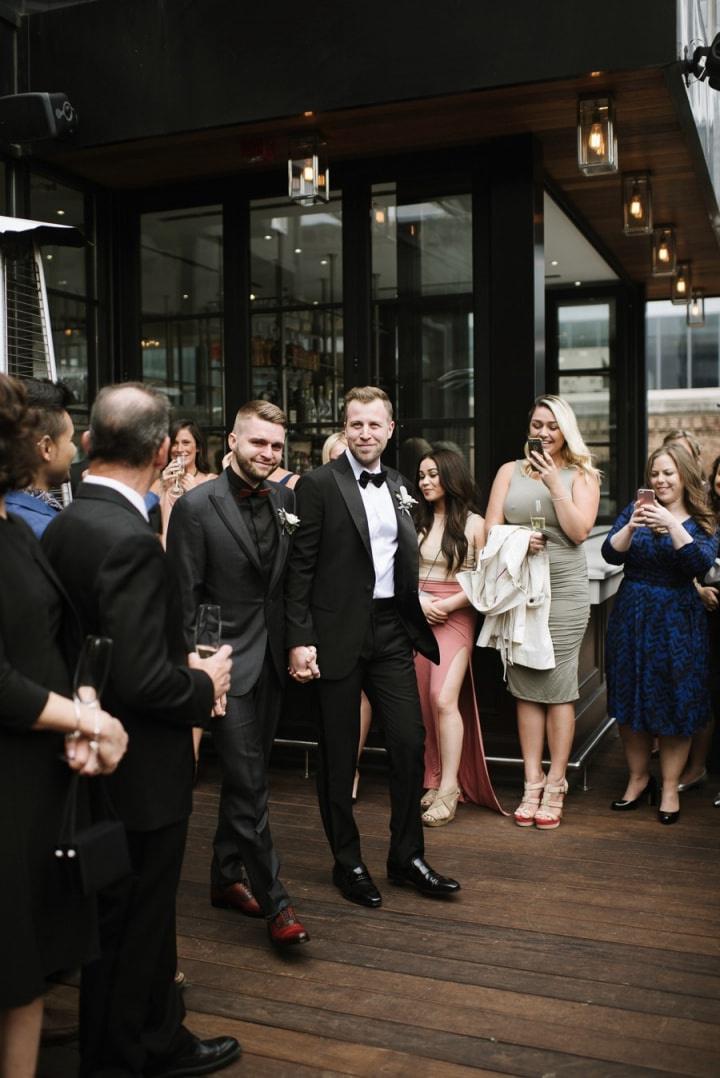Expert Advice for a Same-Sex Wedding Procession
Count the procession among the many wedding traditions that are singularly designed for opposite-sex couples. Here are some alternatives for a same-sex wedding procession.

Count the wedding procession among the many wedding traditions that are singularly designed for opposite-sex couples. Just think about the symbolism of the groom waiting expectantly for the bride to be escorted down the aisle by her father. Fortunately for a same-sex wedding procession, this tradition is simply an idea. You should feel free to adopt, adapt or scrap this tradition for something that better suits your vision of your same-sex wedding ceremony.
Here are a few alternatives for a same-sex wedding procession.
We’ve consulted Bethel Nathan, ordained officiant open to all and owner of Ceremonies by Bethel, on some alternatives she suggests to her couples. Regardless of how you proceed, don’t leave your same-sex wedding processional details to chance or to the last minute. Though it may seem like a minor detail, it sets the tone for your ceremony.
Traditional Processional
Same-sex couples are incredibly diverse, and many LGBTQ people have a very specific vision for their wedding day. For those who’ve always dreamed of being the (only) person to walk down the aisle, or of being the person who waits for their bride or groom at the end of the aisle, there’s absolutely nothing wrong with sticking to the traditional wedding procession. In this order, the officiant and the groom enter, typically skipping the aisle, while the attendants from both sides of the wedding party walk down the aisle together in pairs. The bride enters last, often escorted by one or two people.
Both Get a Turn Down the Aisle
A slight twist on tradition for a same-sex wedding procession is to give both members of the couple a turn to walk down the aisle and command the audience’s attention. There a lots of ways to play with this idea as well, according to Nathan, who said some partners choose to stop halfway down the aisle and wait for their partner to walk down the aisle. The two then take the final steps together and arrive at the officiant at the same time. If you choose this route, it’s important to talk to your officiant about when you’d like the audience to rise—before the first partner, before the second, or at some other time.

Creating Two Aisles
There’s no need to stick to the center aisle as the only way to enter your ceremony. Easily create two, equal aisles by using the outside of the chairs as aisles. In this scenario, you and your partner enter at the same time and meet at the center, in front of your officiant. If you or your partner are escorted, that person would leave at that point, Nathan said. Another option, according to Nathan, is to enter from the sides of the ceremony space, with your wedding attendants marching in behind you, everyone meeting at the front in their designated places.
Walk in Together
Seriously simplify your same-sex wedding procession by walking down the aisle together. Depending on the size of the ceremony space, you might have your escorts walk down the aisle with both of you, or simply share an escort between the two of you. This person might be your child or the person who introduced the two of you.

As with every aspect of planning your same-sex wedding, it’s your adventure and the details are up to you. Just be sure to think through this step, and discuss it with your officiant before.
Find your wedding officiant on WeddingWire »





